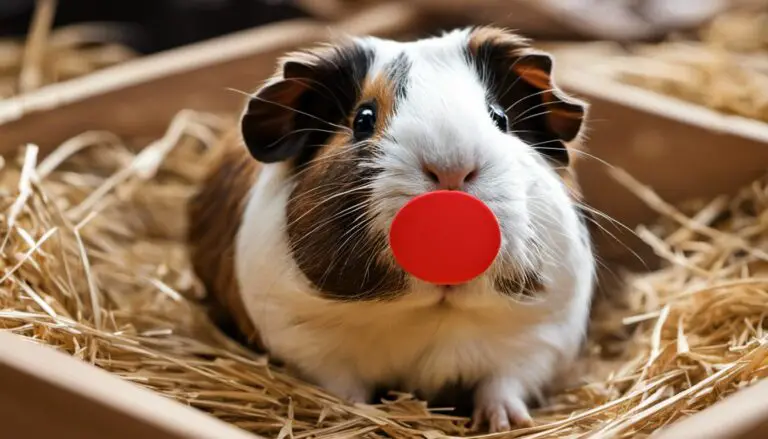The Truth About Guinea Pigs: Why They’re More Than Just Cute Pets
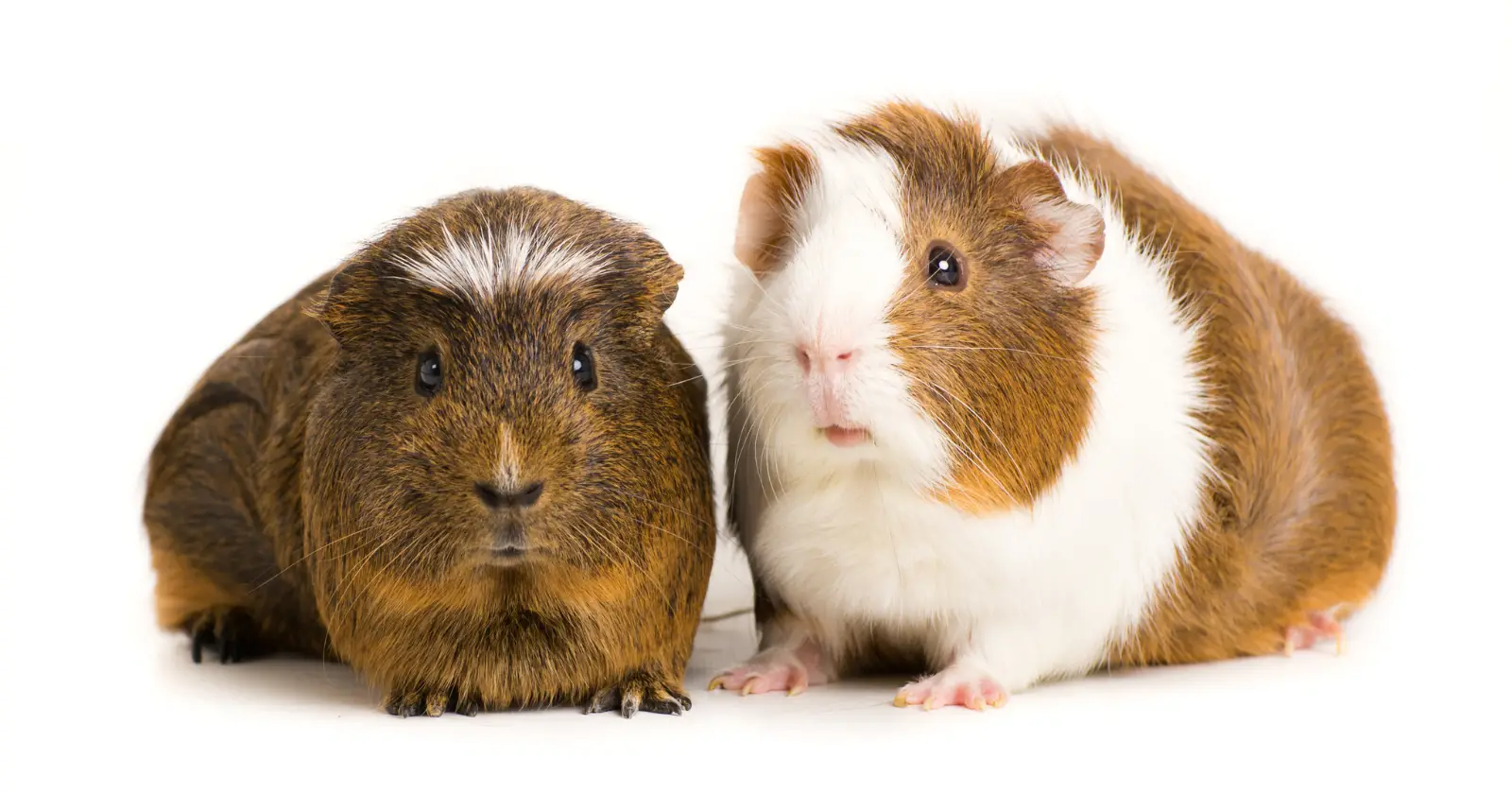
Guinea pigs are excellent pets. These chatty little creatures are social, gentle, and entertaining, packed with personality! Piggies can make excellent young pets if an adult ensures they receive the necessary care. Guinea pigs are social animals and enjoy interacting with their owners and other guinea pigs, making them great pets for families and individuals.

Regarding physical requirements, guinea pigs require a large cage with plenty of room to move about, play, and relax. Are you craving to know fun facts about guinea pigs? In this post, we have tried to hit the nail on the head to inform you about guinea pigs. Let’s dive deep into the details and learn more about guinea pigs.
Contents
Table of Contents
Are guinea pigs The Cutest pets?
Guinea pigs, often known as cavies, are cute and cuddly pets. They’re also incredibly easy to keep and are usually very gentle.
All You Need to Know About Guinea Pigs
You are what you eat. Guinea pigs are herbivores that primarily eat hay, fresh vegetables, and fruits and require a balanced diet to stay healthy. They require access to clean water every time. They are popular pets for their small size, cute appearance, and friendly personalities.
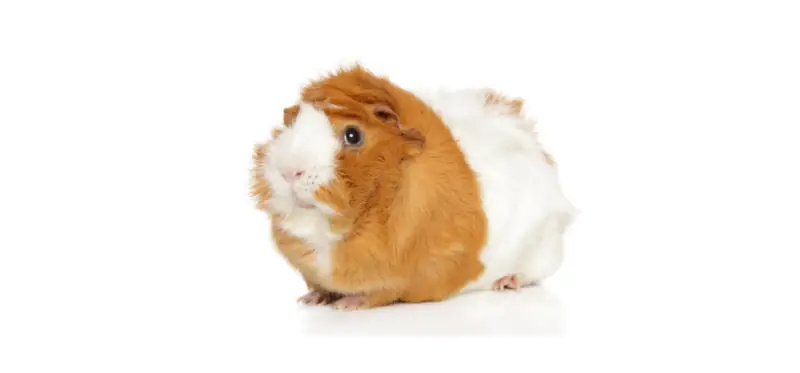
Their cage should be cleaned once a week, and new bedding and litter should be provided. They also must be exercised regularly and allowed to play and explore outside their cage for at least an hour per day. It would be great if you adopted guinea pigs in pairs.
Guinea pigs require regular check-ups with a veterinarian competent in handling small animals regarding medical needs. They are susceptible to certain health issues, including dental difficulties and respiratory infections, and may require regular grooming to keep their fur healthy.
Guinea Pig Breeds
Here, we highlight some of the most common guinea pig breeds and their characteristics.
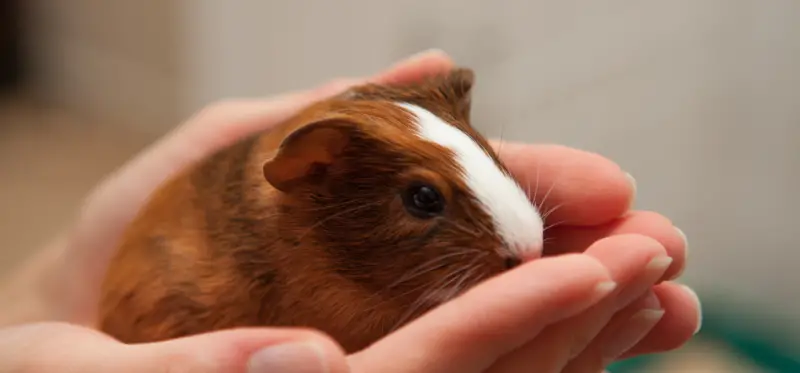
Abyssinian
Abyssinian Guinea Pig is a short-haired rosette breed. These are intelligent and fascinating creatures with a lot of energy. Because they enjoy being the center of attention, many owners find them straightforward to teach and incredibly pleasant to handle.
American
Americans are medium in size and have silky, sleek coats. They get along nicely with other guinea pigs and like being touched, even by young kids. They normally respond well to regular handling and rapidly become very close and affectionate to their owners.
Skinny Pig
Skinny Pig – is a hairless breed. They don’t ordinarily need grooming because they don’t have hair, but their skin benefits from a fortnightly cleansing.
American Crested / White Crested
American Crested Guinea Pig is a smooth, crested short-haired breed. They have a shy nature but are smart, so they will quickly learn the familiar noises of feeding time and certain voices.
Teddy
Teddy Guinea Pig is a fuzzy short-haired breed. Teddies also have dry skin, which means they only require a couple of washes per year; thus, they require no upkeep other than cutting their nails and keeping their ears clean.
Silkie / Sheltie
Silkie (or Sheltie) Guinea Pig is a long-haired breed. Silkies are known for their soft and quiet personalities, but when they become accustomed to their owner’s attention, they may become highly friendly and lively.
Watch this video:
Cages
Guinea pigs should be housed in large, solid-bottom cages with plenty of bedding, such as Timothy hay or corn cob chips. A cage must be spacious enough for them to run around and play. They also enjoy having a cabin or cabinet in which to hide.
Guinea pigs are susceptible to stress and shock, so keeping them in a safe and comfortable environment is important. Guinea pigs are naturally energetic creatures that require a clean and dry environment with plenty of freedom to run around to be happy and healthy.
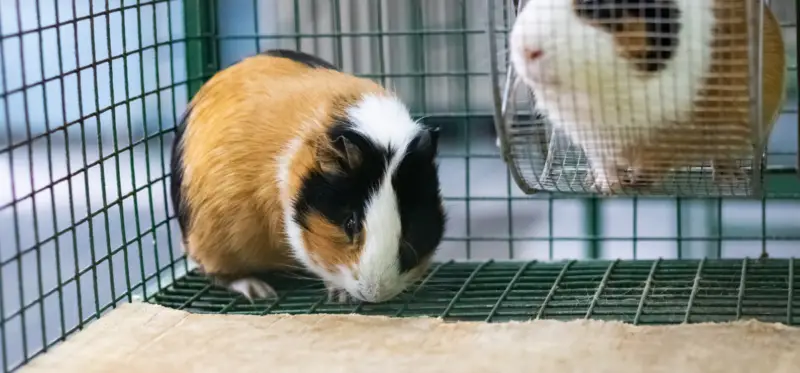
Although Guinea pigs should be housed in groups. The suggested hutch size is:
- 1m x 70cm for one guinea pig.
- 1.4m x 70cm suitable for two guinea pigs
- 1.6m x 80cm suitable for three guinea pigs
Bedding for Guinea Pigs
Several types of bedding are safe and appropriate for guinea pigs. The most commonly used bedding types include paper-based, fleece, wood, and hay. The best bedding for your Guinea Pig is either paper or fleece-based bedding.
Wood shavings can also be used, but choosing a variety free from aromatic oils and dust is important. Fleece bedding is another option, which can be washed and reused multiple times. It is important to keep bedding clean and fresh for the health and well-being of your guinea pig.
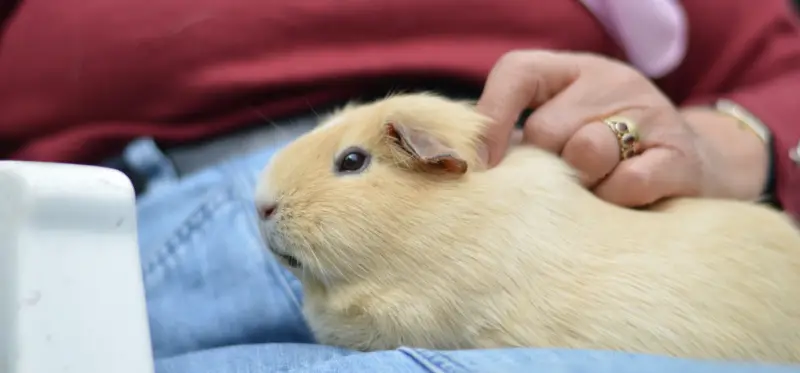
Dirty bedding can lead to a buildup of bacteria and ammonia, which can cause respiratory problems and infections. It can also lead to unpleasant odors in the living space. Therefore, it is recommended to spot clean daily and do a full bedding change at least once a week.
When changing bedding, it is important to use a pet-safe cleaner and thoroughly clean the living space before adding fresh bedding. By providing your guinea pig with clean and fresh bedding, you can help ensure they are healthy, happy, and comfortable in their living space.
Is this information about guinea pigs beneficial to you? Of course, “yes” Read on to learn more about guinea pigs.
Feeding
Guinea pigs are natural herbivores who love to eat grasses, hay, plants and herbs, seeds, twigs, bark, and occasionally roots. Add a large portion of Pellets as part of the diet. Let’s have a look at some information about guinea pig feeding so that you can keep them healthy and fresh.
Guinea pigs are continuously nibbling, and it’s important they have access to food. They love to eat different types of fruits and vegetables. Bell peppers are a favorite to them! Add one cup of veggies to their diet per day.

Guinea pigs lack an enzyme that produces vitamin C. Thus, their food must be supplemented. Water should be offered in bottles with sipper tubes, and pellets should be the largest part of the diet. Giving your pet oranges at least once a week will suffice.
The rear teeth of a guinea pig never stop growing; chewing hay helps to wear them down and prevents dental problems. Suitable hays, such as wheat, oat, or barley, can be purchased at produce, pet stores, and vet clinics specializing in guinea pig care.
In 2018, about 13 thousand tonnes of guinea pig food were sold in the United Kingdom.
Grooming
The most important thing you should know about guinea pigs is “grooming” to keep them clean and healthy. The type of grooming required will depend on whether your little friend has short or long hair.
Long-haired guinea pigs require daily brushing, while a brush every couple of weeks is sufficient for short hair. Bathing should be done sparingly, as too much water can strip the natural oils from their skin.
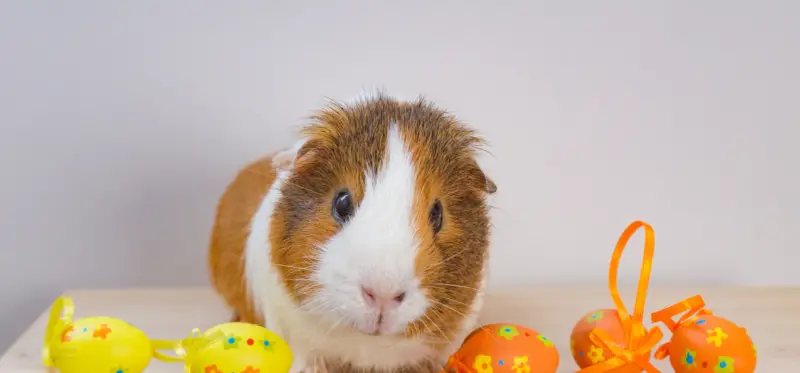
The nails of a guinea pig must also be clipped monthly. As their nails grow, so does the blood flow to the nail, so just cut the tips. Avoid cutting the quick, pink nail part containing blood vessels and nerves.
Guinea pigs can urinate up to 100 times each day. Guinea pigs should have their bedding changed regularly, and their living space should be cleaned daily to prevent the buildup of bacteria and odors.
Spot cleaning should be done as needed, and deep cleaning should be done at least once a week. Following these tips can help keep your guinea pig clean and healthy.
Remember, regular grooming and dental care can prevent many health problems and help your guinea pig live a long, happy life, as a happy pet means a happy owner.
5 Fun Facts About Guinea Pigs
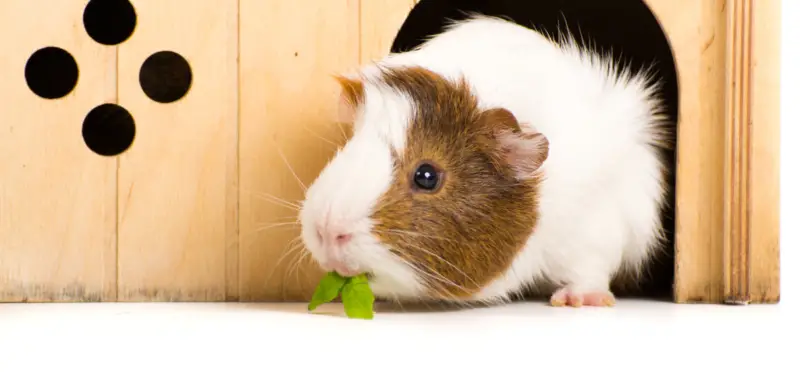
1. Guinea pigs have four toes on their front feet but only three toes on each back foot.
2. Guinea pigs secrete a milky, white substance from their eyes to lubricate their eyes and clean the guinea pig’s faces.
3. Guinea pigs eat their own poo……What? Yes, in addition to the poos in their enclosure, they also generate unique soft poos. They eat these to ensure they acquire all the necessary nutrients.
4. Guinea pigs can learn new tricks. They are quite intelligent and can be taught to perform tricks if you are patient and use food as a treat.
5. A male guinea pig is known as a ‘boar,’ while a female is known as a ‘sow.’ Baby guinea pigs are called ‘pups.’
Conclusion
There are many breeds of guinea pigs, but the most common include Abyssinian, Skinny Pig, Teddy, and many more. Keep your guinea pig as a pair; otherwise, it will feel lonely. Please give it a healthy diet. Clean its bedding as needed to avoid infections and diseases.

Guinea pigs make great pets due to their gentle nature, low maintenance, and affectionate personalities. They offer companionship and stress relief. We hope you get your head around this post about guinea pigs. Visit allourcreatures to learn more about guinea pigs and other pets.



